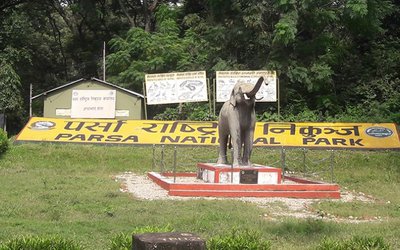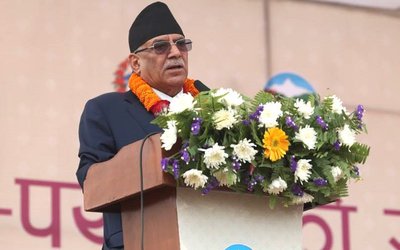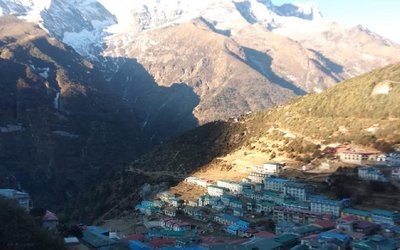Following several years of rise in rhino poaching, Nepal maintained a zero level of poaching in the year 2011. This is for the first time security forces guarding National Parks achieved this success. In the year 2007 and 2008, there were widespread killings of one-horned rhinos, raising alarms in the conservation circles.
Security forces at Chitwan National Park; Bardia National Park; Nanda Box Battalion, Chitwan; Ranadal Company, Nawalparasi; Narsinghdal Battalion, Bardiya; Chandiprasad Battalion, Kanchanpur and Shuklaphanta Wildlife Reserve made individual and collective efforts which proved instrumental in protecting tigers in Nepal.
The Enforcement Awards established by WWF’s Tigers Alive Initiative recognized six different institutions for the best site-based intelligence work. For the first time in the last decade, Nepal’s conservationists have a good reason to rejoice: year 2011 as a zero poaching year.
In Nepal, the greater one-horned rhinoceros is starting to recover from poaching. A census conducted in April 2011 found 534 rhinos (Rhinoceros unicorns), 99 more than were found in 2008.
Chitwan National Park is home to 503 rhinos, an increase of 95 from 2008 data. The number of rhinos in Bardiya National Park is up by two from the 22 found in 2008. Seven of the rhinos were found in Shuklaphanta Wildlife Reserve, up by two since 2008 as well.
The new figures show the one-horned rhino population is recovering after a dramatic plunge in numbers during the 1996-2006 civil war, when soldiers deployed to prevent poaching left to fight a guerrilla insurgency.
“The year 2011 was a landmark year for conservation in Nepal as not a single rhino was killed in the country across the year,” said officials at the Ministry of Forest and Soil Conservation.
To mark this achievement, the Government of Nepal, WWF and various conservation organizations celebrated Zero Poaching Year amidst a special program organized on 7 January 2012 at Chitwan National Park in Nepal’s Terai Arc Landscape. According to WWF, the program was organized to felicitate the key institutions whose unrelenting efforts in conservation helped bring about this success.
“This success is attributed to the coordination among the Government of Nepal, conservation partners, local communities and most importantly security forces,” said Krishna Acharya, Director General of the Department of National Parks and Wildlife Conservation (DNPWC).
"To combat poaching more effectively a separate body has been formed under DNPWC to deal specifically with wildlife and security inside the parks has been stepped up with the number of range posts going up from 7 to 51," Acharya added.
In October, Nepal arrested a complete chain of criminals involved in poaching and trading of the one-horned rhinoceros. In that case alone, 17 people were held on the charge of poaching the endangered species and smuggling their derivatives.
The arrests were a significant achievement leading to the complete breakdown of a network of poachers and smugglers right from the grassroots to the international level.
“The achievement of zero poaching status of rhinos will need to be further complemented by zero poaching of tigers as well,” stated Mr. Anil Manandhar, Country Representative of WWF-Nepal. “If we can lift the scale, intensity and professionalism of the effort against poaching, we will be able to take sure steps to achieve the goal of doubling the number of wild tigers by 2022.”
In order to combat poaching and illegal wildlife trade effectively and to bring culprits to book, WWF also made a formal announcement at the event to support the establishment of an interrogation centre in Chitwan National Park Headquarters through the Tigers Alive Initiative.
According to government officials, the rhino population's recovery was due to improvements in law enforcement and in local awareness of the importance of conservation.
"The government is encouraged by this positive result, although challenges remain in curbing poaching and protecting rhino habitat," said Acharya.
The animals are poached for their horns, which are prized for their reputed medicinal qualities in China and southeast Asia.
As Nepal is able to maintain its target, it remains to be seen how it will continue to retain the success. A single horn can sell for thousands of dollars. Another threat to rhino populations is the loss of habitat as human populations expand into the lands where rhinos roam.
- TANAHU HYDROPOWER PROEJCT: A Significant Achievement
- Apr 15, 2024
- AMBASSADOR HANAN GODAR: Sharing Pain With A Nepali Family
- Mar 30, 2024
- VISIT OF KfW AND EIB TO NEPAL : Mission Matters
- Mar 25, 2024
- NEPAL BRITAIN SOCIETY: Pratima Pande's Leadership
- Mar 24, 2024
- NEPAL ARMY DAY: Time To Recall Glory
- Mar 15, 2024
















